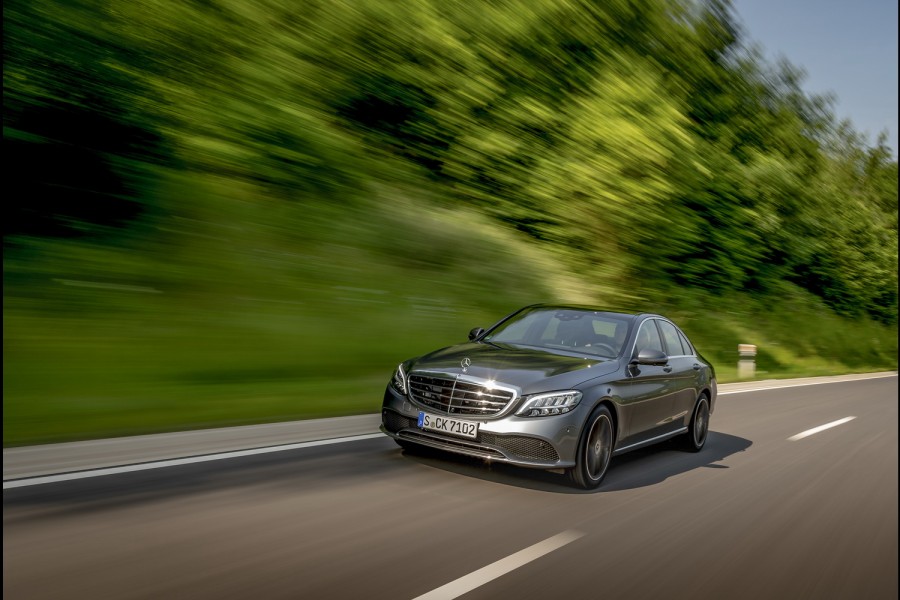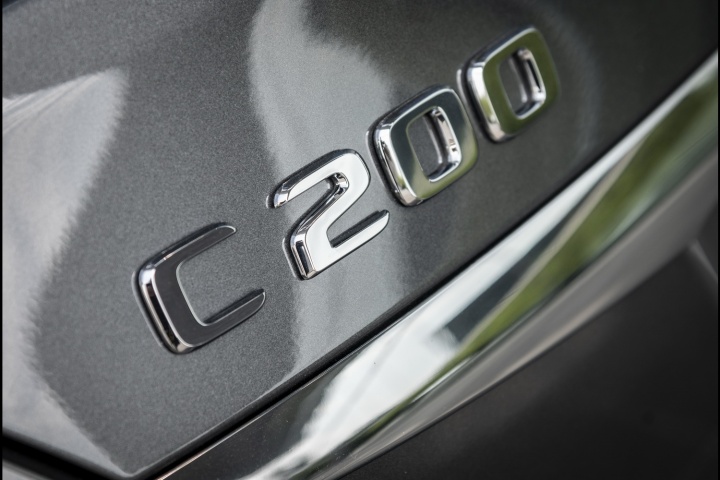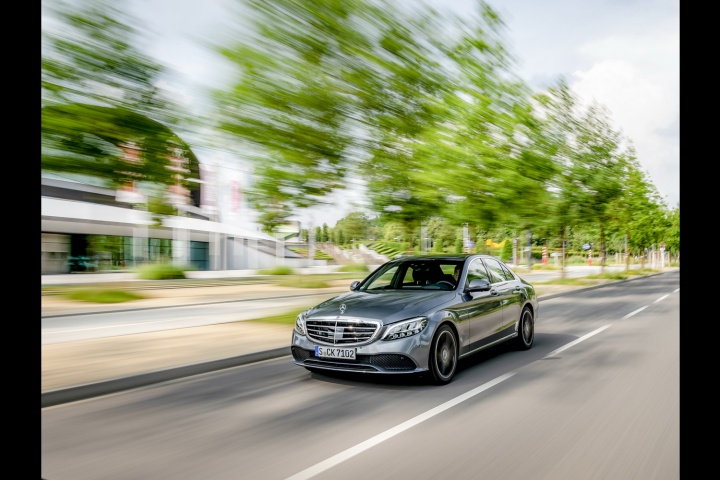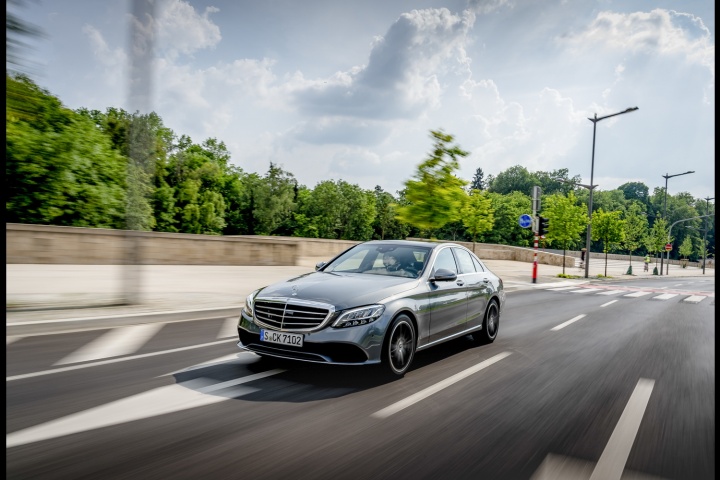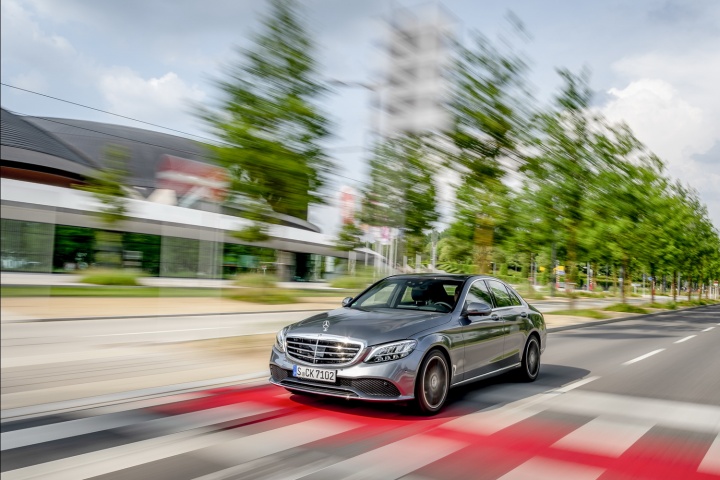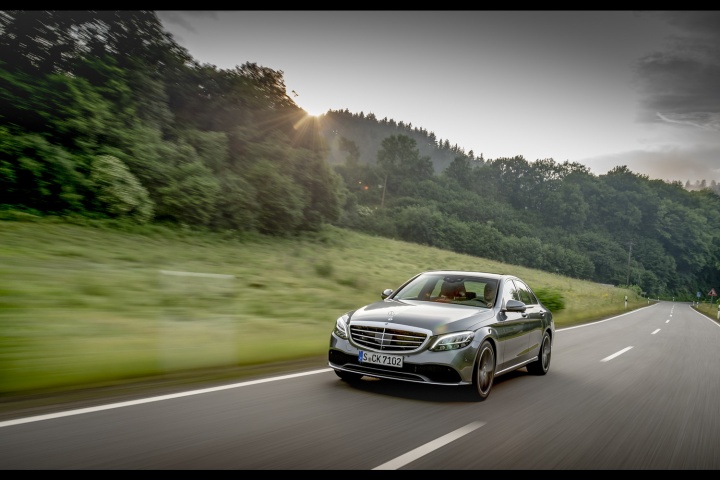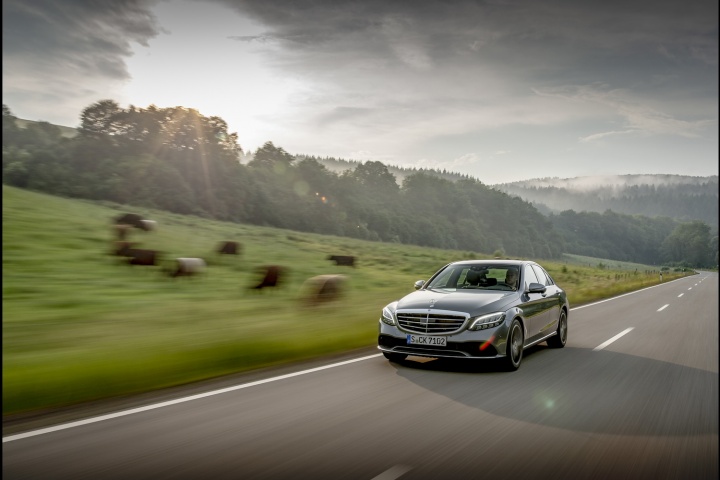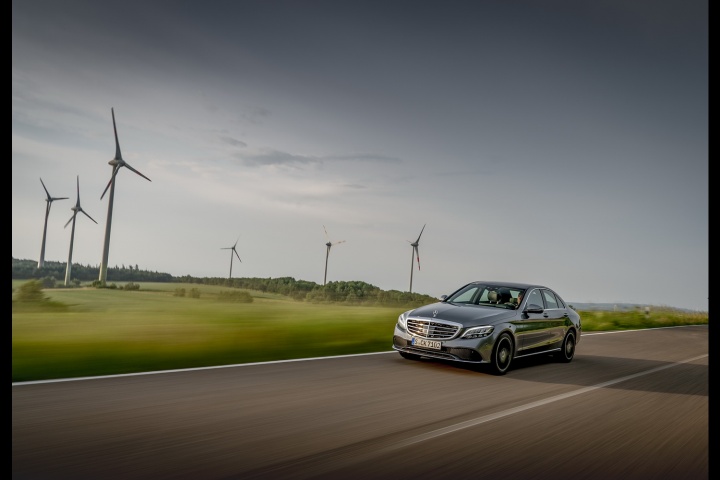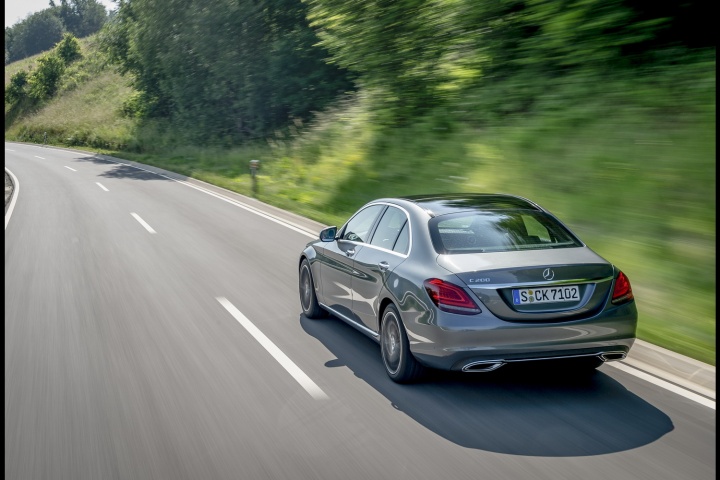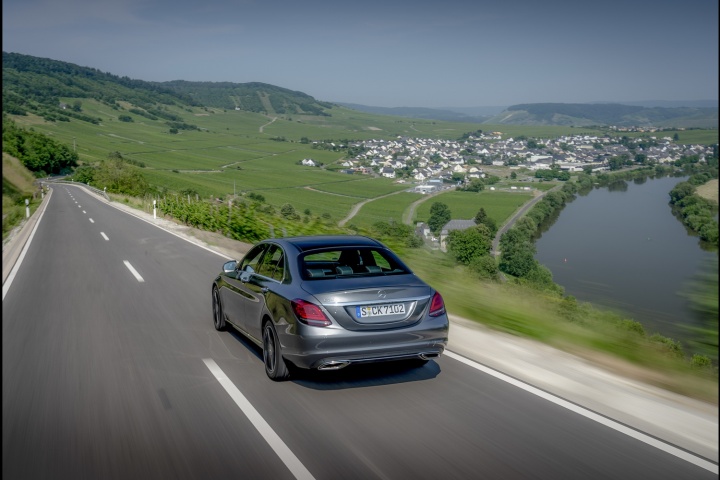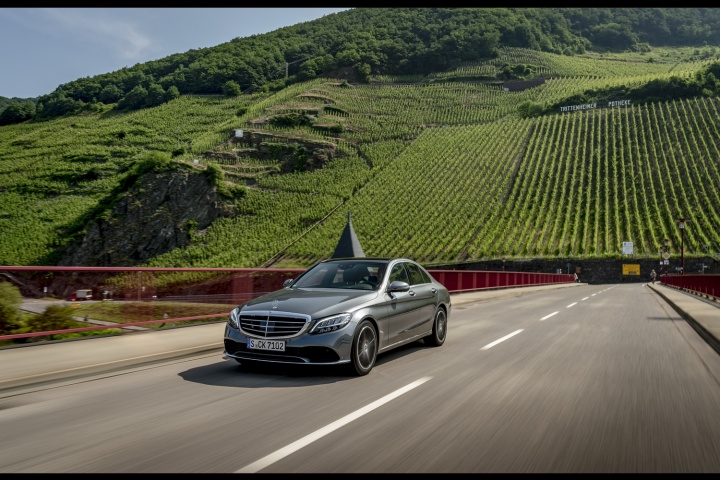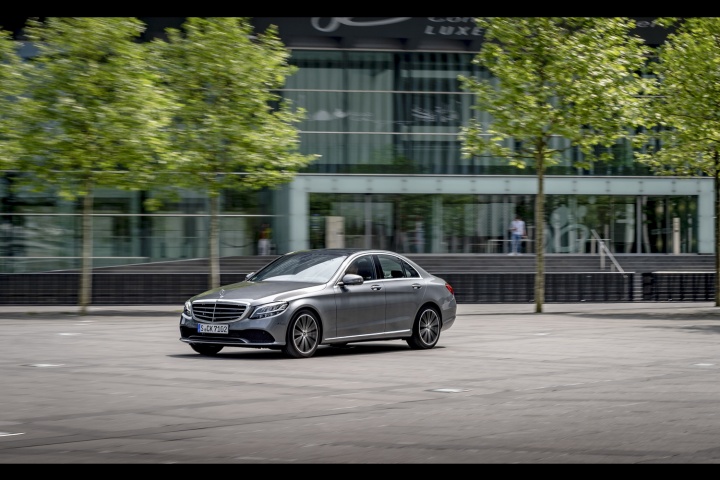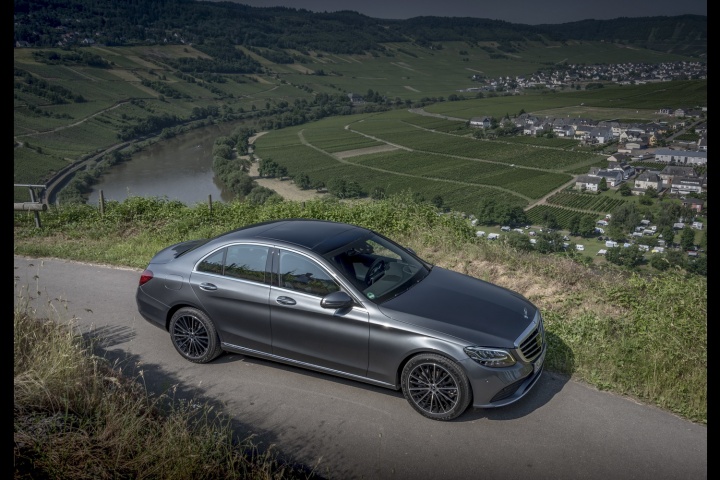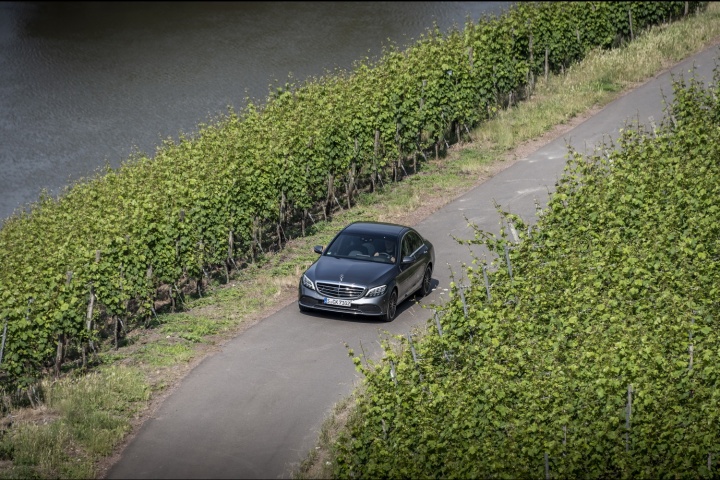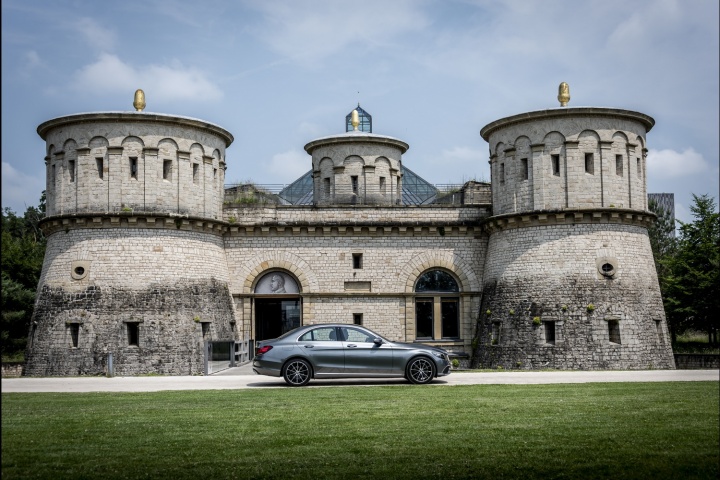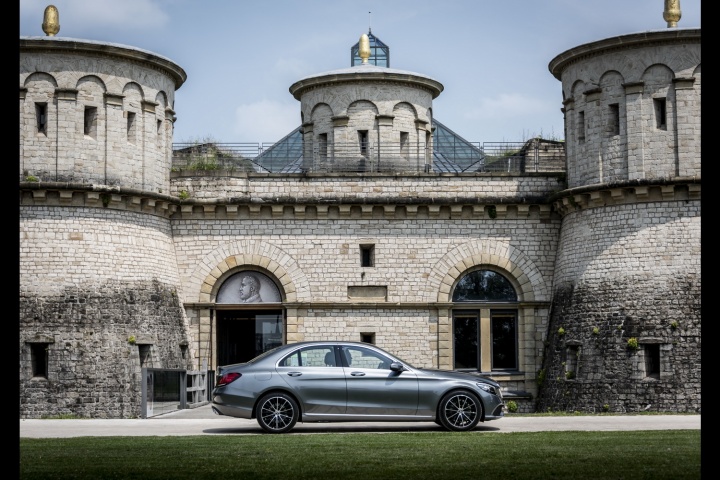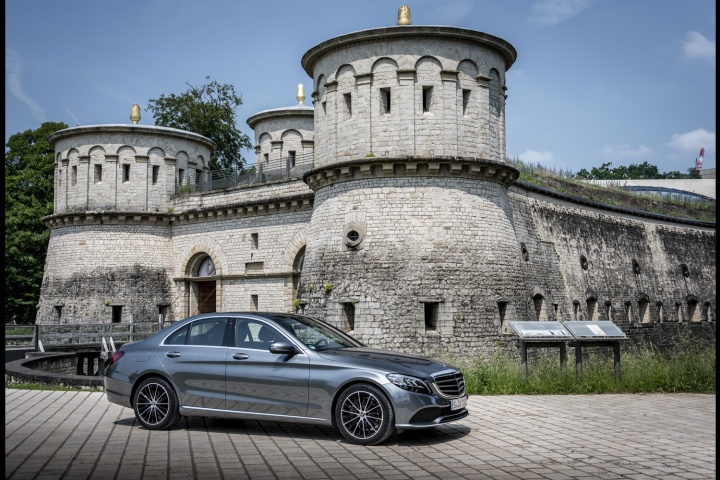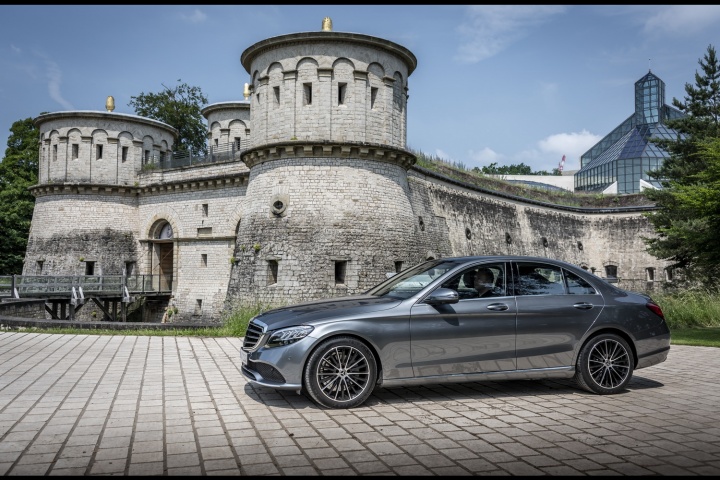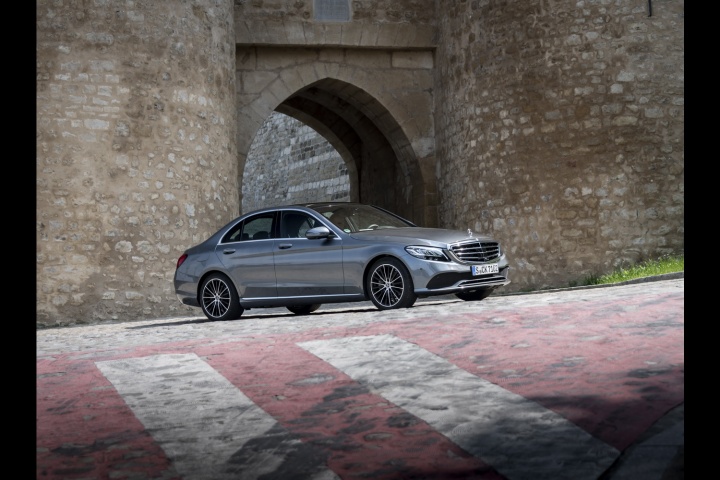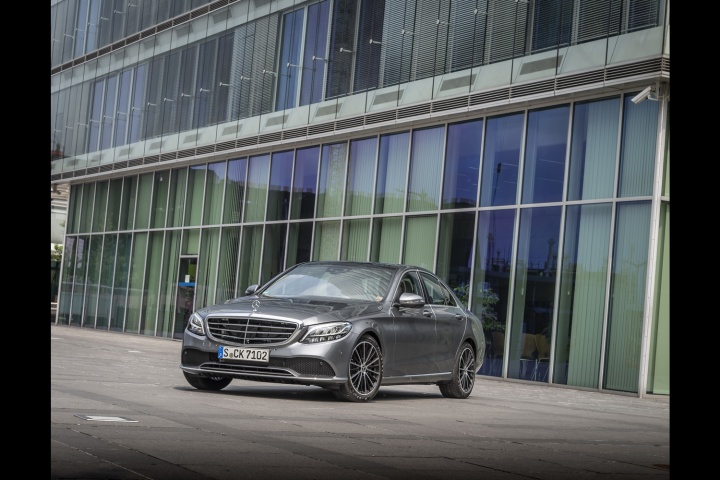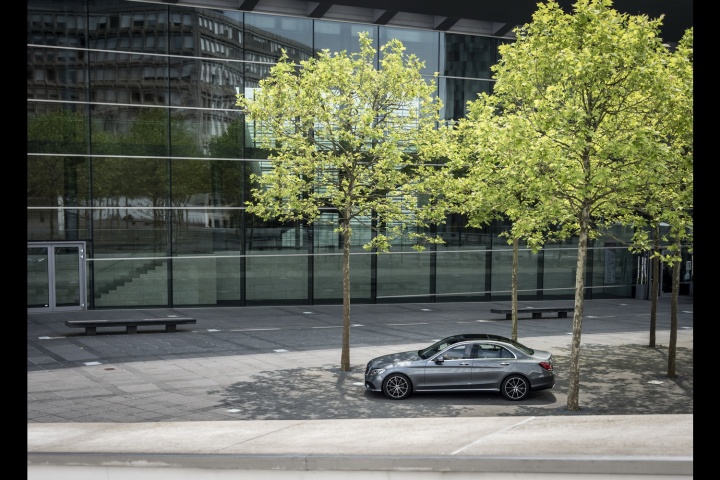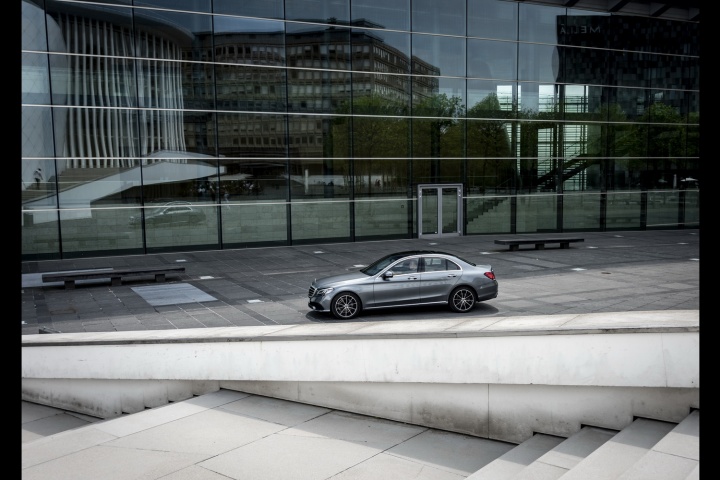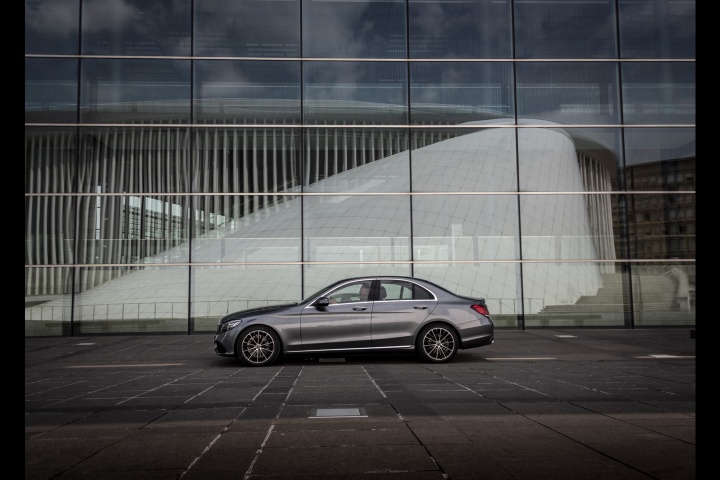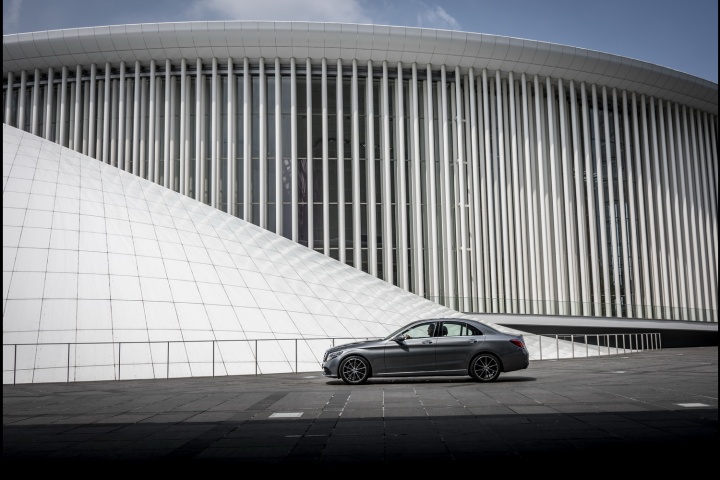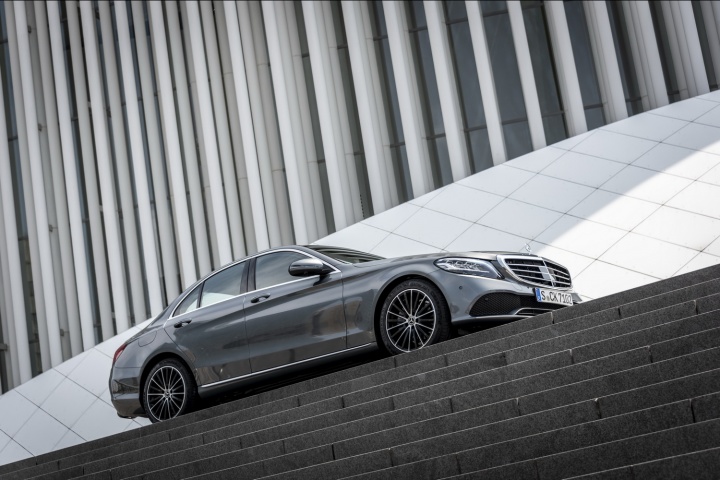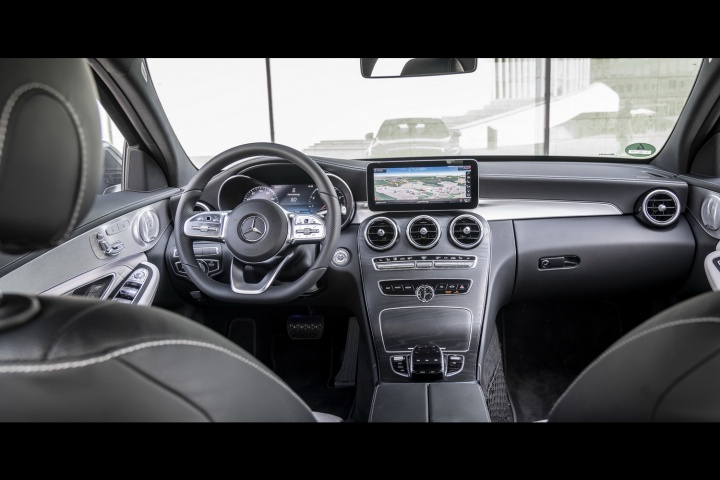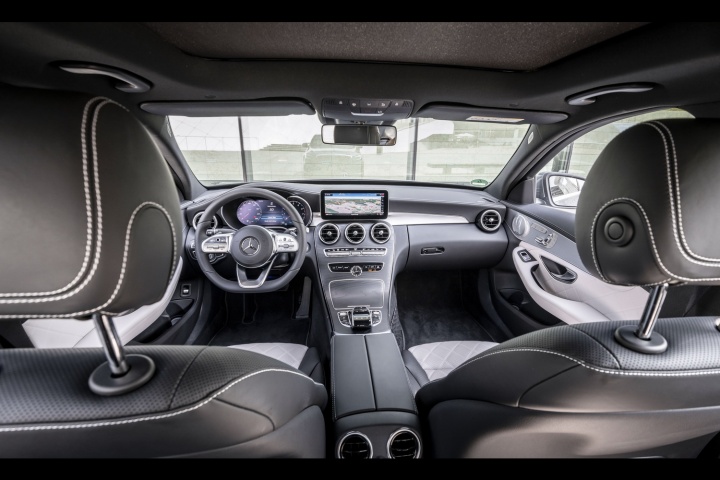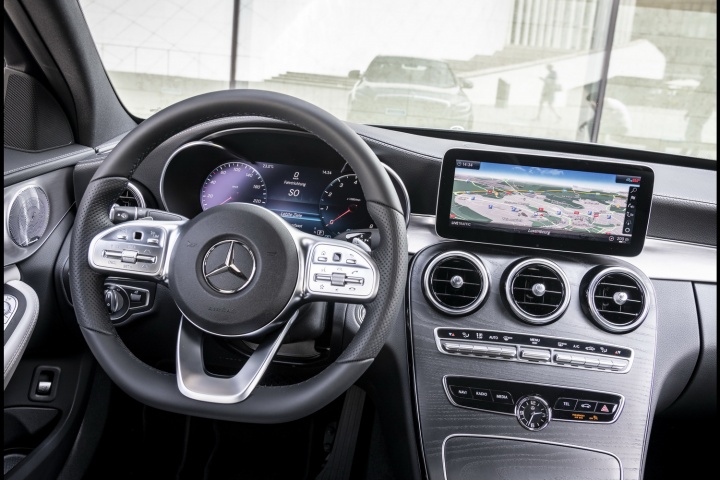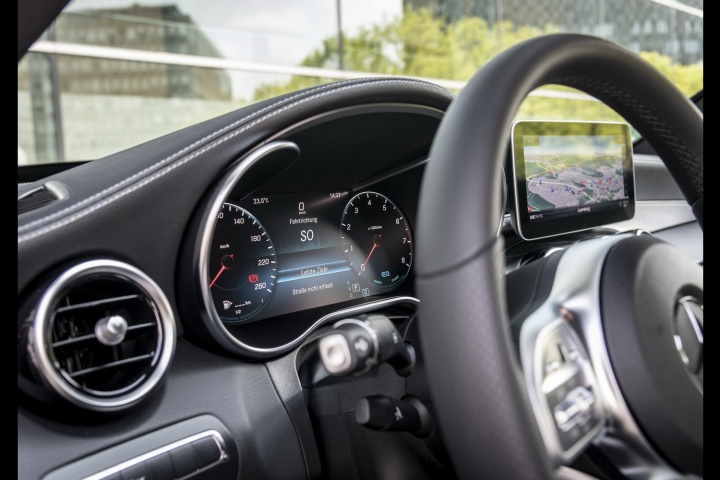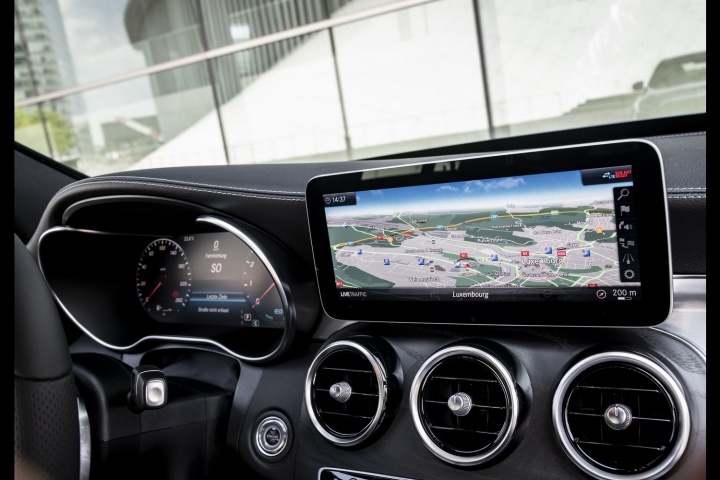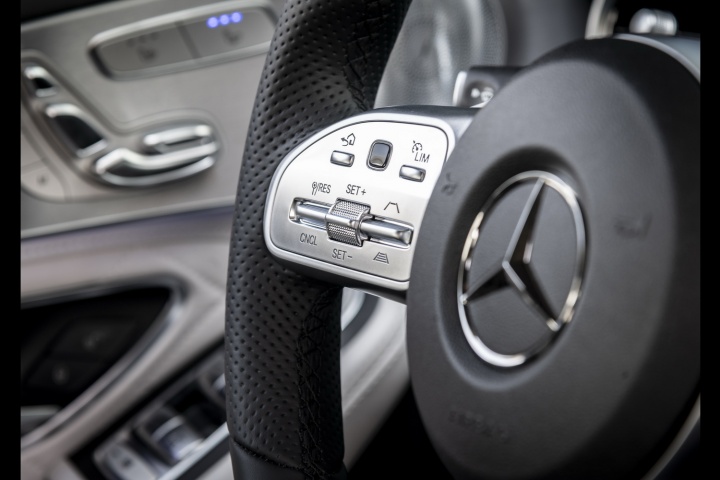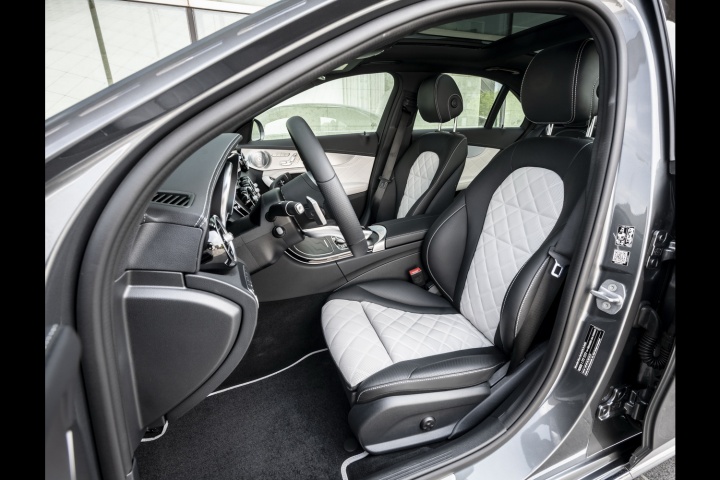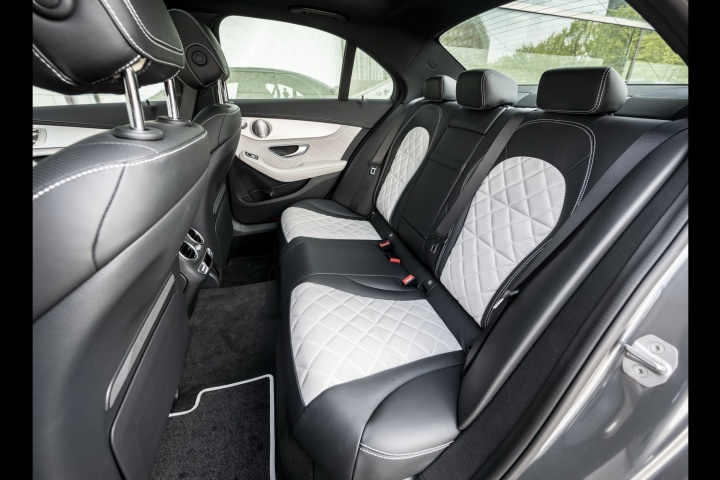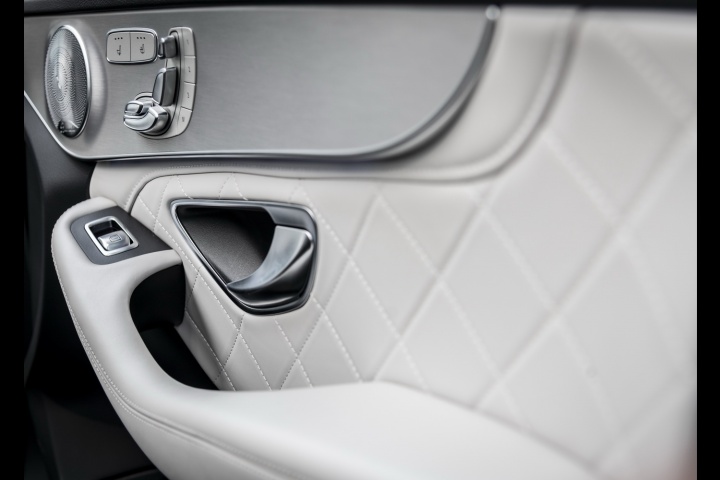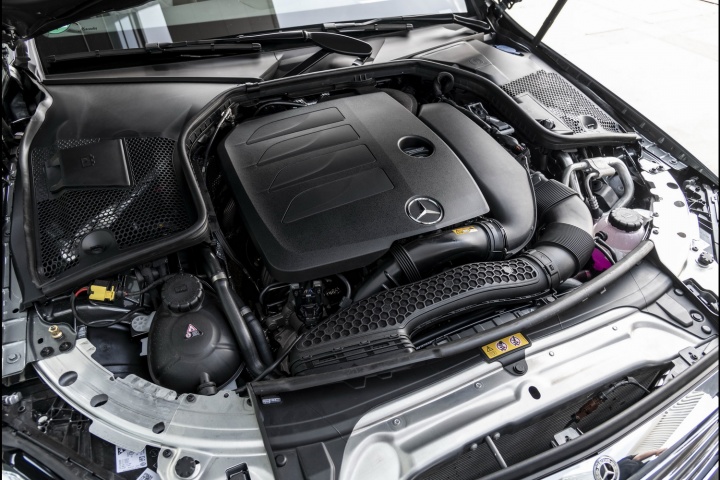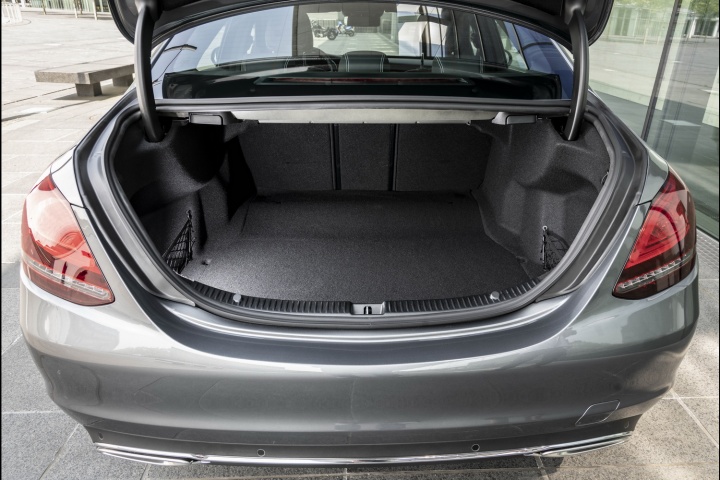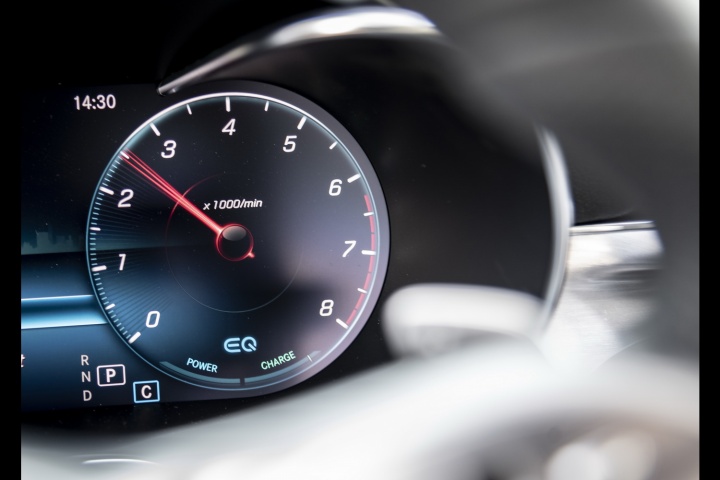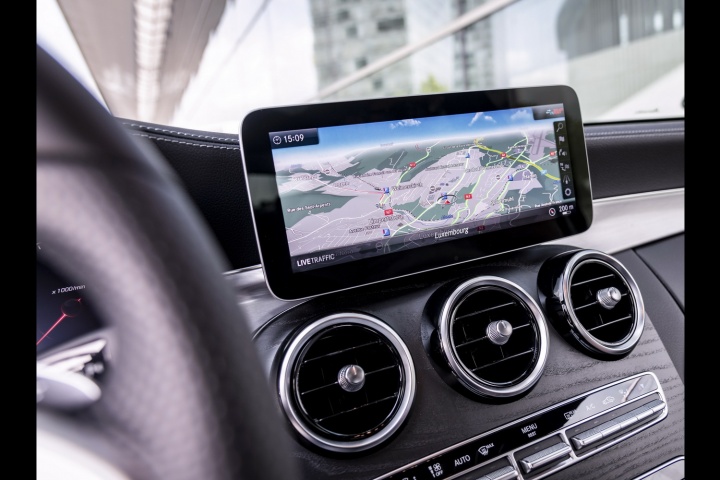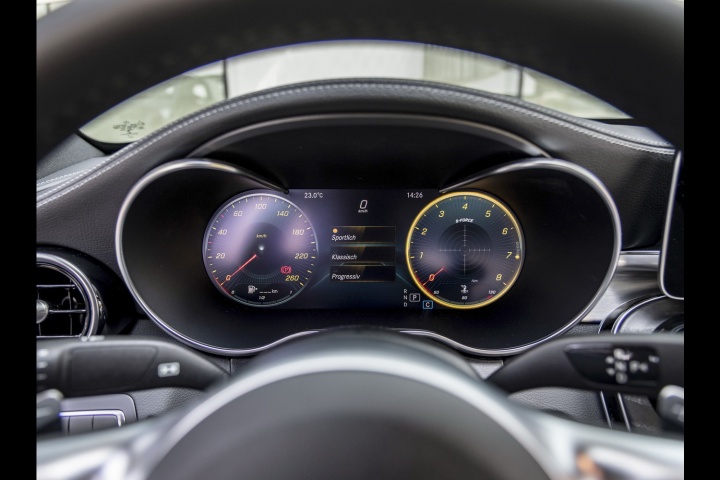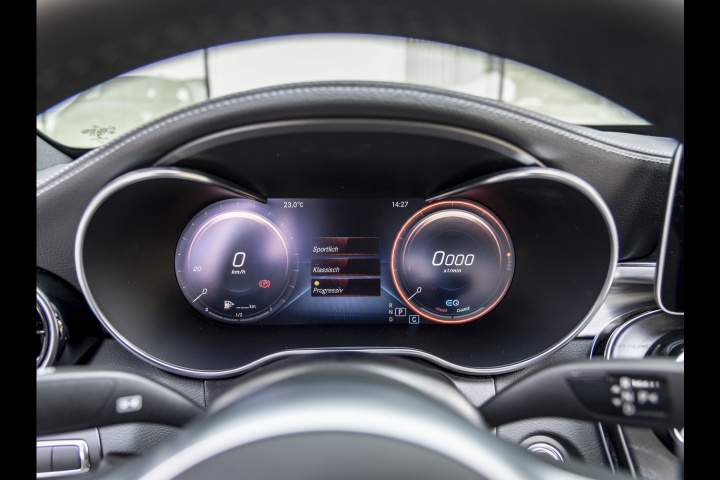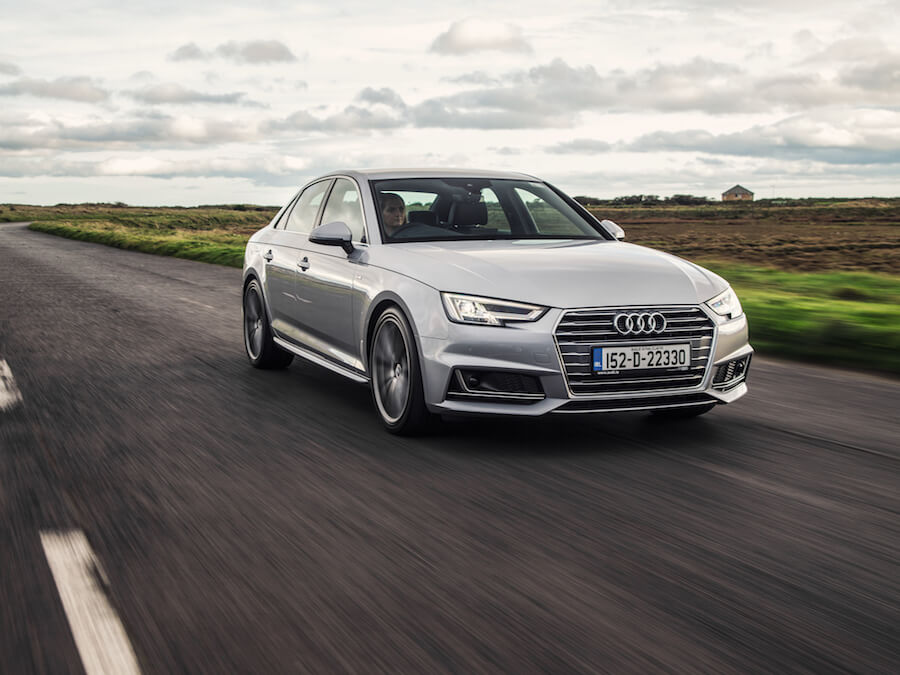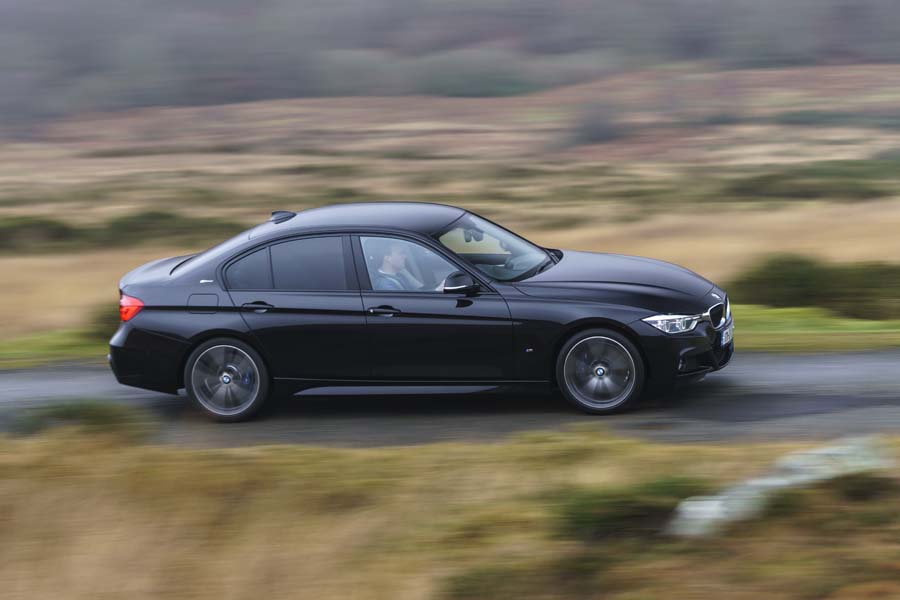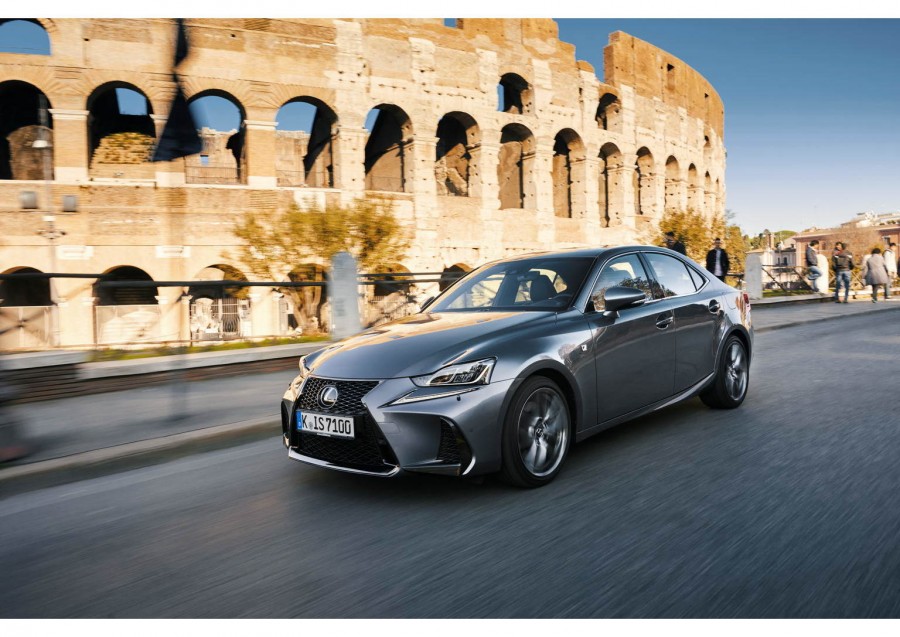The Mercedes C-Class, despite the relentless rise of the SUV, remains a huge seller for the German company, and its second-best selling model in Ireland. This round of updates brings some new tech, gently revised styling and an interesting new mild-hybrid powertrain option to the market.
In the metal
The styling of the Mercedes C-Class saloon has aged exceptionally well. When the current model was first launched, it looked almost a touch odd, like two halves of two different cars joined together, but in the years since it has mellowed rather nicely. Perhaps that's why Mercedes has chosen not to meddle overmuch with the C-Class's styling on the outside. The changes are spectacularly subtle (if that's not an oxymoron) with a new 'Diamond' grille for AMG-Line models, new bumpers, a new lower air intake and new headlights that can be optionally equipped with a super-bright Multibeam LED system, which can throw its high beam light as far as 650 metres.
In the cabin, again much is familiar, but there have been some significant changes all the same. While a seven-inch central screen for the Comand infotainment system is standard, you can now upgrade that to a much wider 10.25-inch screen, and that can be combined with an optional 12.3-inch all-digital instrument display. Sadly, it's not the full-width digital dash that you can specify in the S-Class, E-Class and new A-Class, but it looks impressive all the same. The 'Progressive' instrument layout looks a touch too PlayStation-y for our tastes, but the Sport display makes it look like a 190E Cosworth from the 1980s, and that's just lovely.
There's a new steering wheel as well, essentially lifted from the S-Class, which uses a mixture of normal buttons and little touch-sensitive pads that you stroke with your thumb. It all works well, but the all-silver layout can look a bit cheap, and some of the buttons similarly feel a little less than lovely. No complaints about the centre console, which can now be had with open-pore wood, and the seats are terrific, whether you're talking about the standard seats in this car, or the high-backed AMG bucket numbers. Space is also very good, and the C-Class (with decent rear legroom and a good 435-litre boot) remains one of the more practical cars in its class.
Driving it
The biggest change is under the bonnet, where Mercedes has introduced a new family of 1.5-litre turbocharged petrol engines, with standard-fit 48-volt mild hybrid assistance, that seek to combine diesel-like fuel economy with low nitrogen oxide emissions. Does it work? Well, mostly...
Mercedes calls the 48-volt system 'EQ Boost', which is a way of laying the groundwork for its forthcoming all-electric EQ model range. Here in the C-Class, it means you get a compact lithium-ion battery (recharged when coasting and braking) and a belt-driven integrated starter/alternator. That can provide a 14hp kick to the engine's performance, which means you can use it to restart the engine seamlessly from a stop-start cycle; use it to allow the car to 'sail' in neutral for brief periods under a light throttle load; or use it to add a bit of extra low-down torque and cover up any gaps in the twin-scroll turbocharger's power delivery. In this last regard, it works rather well. Anyone trading out of a diesel model will find this engine's low-down performance very impressive, even if you must wait a beat or two for the nine-speed automatic gearbox to gather itself. Aside from those pauses, it has very punchy all-round thrust.
The problem, though, could come in terms of fuel consumption. Mercedes made a lot of fuss in presenting us this engine, pointing out that it has a new piston design, revised variable valve timing and reduced internal friction, all in the name of improved economy. On our brief test drive, though, we didn't do so well. For the record, we got 11.8 litres per 100km, or 23.9mpg. Now, that comes with the caveat that our route included two long runs along a German Autobahn, at speeds more than 200km/h, and on slower routes the average fuel economy was heading for better than 40mpg, but it's possibly something that will have to wait for a longer test drive, on more familiar roads, at home, before we can make a definitive call. There is another issue, though, which is that the engine is not quite refined enough. There's a distinct harsh edge to it under acceleration, which may be a disappointment for anyone trading out of a diesel and expecting much-improved refinement.
At least the C-Class remains a terrific car to drive. Our test car had the optional Dynamic Body Control dampers, which can be left in squishy Comfort mode, or switched over (along with the steering, gearbox and throttle response) to Sport. To be honest, aside from 200km/h strops along the Autobahn, the C-Class is best left in Comfort. On the larger (optional) 19-inch wheels of our test car, the ride in Sport felt just a touch too fidgety, so Comfort felt like a much better compromise (albeit still occasionally firm). There's no benefit, other than added weight, to the steering in Sport mode either and, even in the Comfort setting, it feels slick and well-balanced as you pass into and through corners. It's a hugely confidence-inspiring car, the C, able to entertain when you want it to, but also well capable of just allowing you to sit back and while away a long cruise.
What you get for your money
No rating yet in this area, as Irish prices and specs are still being decided upon, although Mercedes Ireland has told us that prices will only increase by a marginal amount. Avantgarde, Exclusive and AMG-Line versions will be offered, and it's interesting to note that Exclusive is the only trim that gives you the old-school Mercedes star standing proud atop the bonnet. It doesn't look as good from outside the car, but it is rather nice from within. The big screen and full digital dash will doubtless be options, as will some of the safety kit, which now includes adaptive cruise control that reads the satnav and adjusts speed for upcoming corners or junctions; active steering that can help you swerve away from an accident; and an active lane keeping assistant that can follow the car in front if it can't detect the lines on the road properly.
Summary
You'll struggle to spot the new Mercedes C-Class from the outside, but there have in fact been more than 6,500 component changes, so it's really quite a new car. The new EQ Boost petrol engine is interesting, but we need to get a better handle on its fuel consumption and it needs to be more refined. That, and the new instrument and infotainment packs apart, the C-Class is as it has ever been: compact, but massively impressive.

